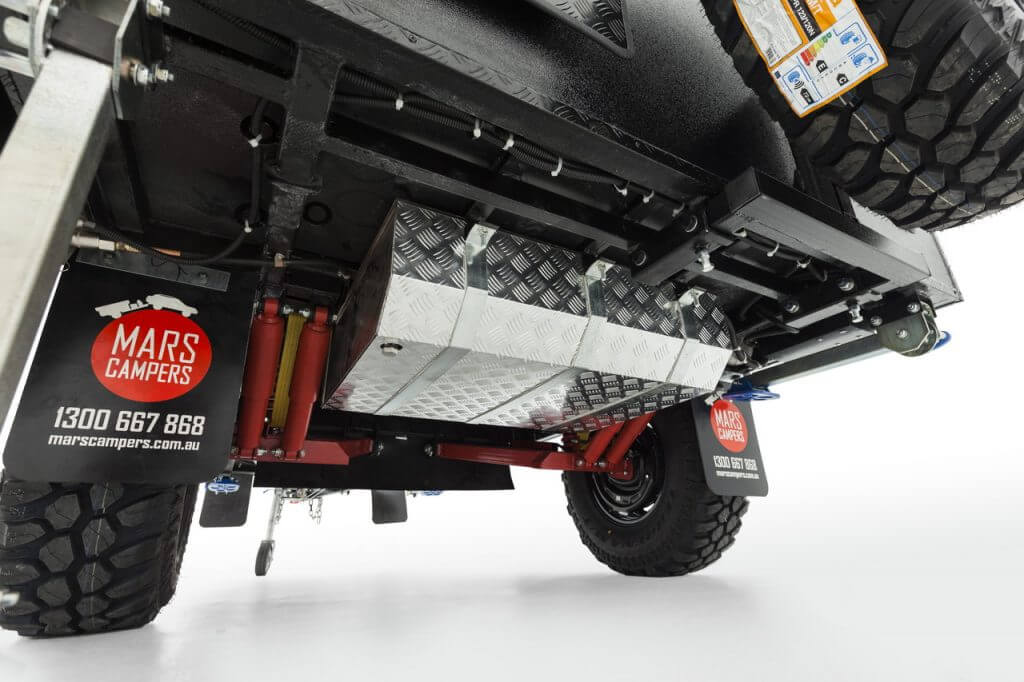
One of the big advantages of camping with a camper trailer is the ability to carry a lot of water, be it on jerry cans or on the camper water tank itself.
The last thing you want on your camping trip is to find odd tastes and smells on your water, here we share what works to keep the water tanks in tip-top condition and avoid unnecessary surprises with your water.
The first step to ensure your water will be always pristine is to only fill your water tank using a food-grade hose. Garden hoses are the culprit number one for tasty or smelly water cases. You should be able to pick up a good food-grade water hose from $20 onwards in most camping shops.

There are plenty of options when it comes to flushing the water tanks out, with everything from store-bought products to using household bleach, not to mention the old mixture of bicarbonate of soda and vinegar.
The Milton baby bottle steriliser is another popular option for some campers, too! For me, I wanted to make sure the tank was sterilised so I kicked things off by mixing a quarter of a cup of bleach with a few litres of water in a bucket, then added it to the camper’s water tank when empty before filling it up with fresh water. About ¼ cup of bleach to roughly 55L of water should do the trick. It’s best to run the outlet taps for a minute or two so the mixture gets flushed through the lines and then leave it sitting there for a few hours before flushing the system with fresh water. Then, to get rid of the bleach’s strong smell, I mixed about half a cup of baking soda with a few litres of water and added it to the freshwater tank. Once again I flushed it through the taps, but left it there for a few days before refilling the tank for the final time with fresh drinking water.
If you don’t want to use bleach in your water, another option is to use vinegar and baking soda to flush the water tank. It’s not as effective as bleach in terms of sterilisation, but it’s a good way to keep it maintained. Simply add about a cup of baking soda to a few litres of fresh water in a bucket and pour it into the water tank, which should be only half full at a maximum. This is to allow for the chemical reaction when you add the vinegar in! It’ll foam up and expand like that old rocket project back at school!
So make sure you leave the taps and the filler tube open for air to escape too. Tow the camper over a few bumps and flush it out with fresh water when you get home and you’re all done.
Oh, and don’t get any funny ideas about combining the methods; it’s definitely not a good idea to mix vinegar with bleach! Mixing chlorine bleach and vinegar will create chlorine gas, which is extremely toxic!
At Mars Campers we work hard to develop the best value for money camper trailers with a view of helping you create memorable experiences with your loved ones.
Did you find this information useful and know anyone that could use it? If you found even one tiny nugget in this material to be useful, please do forward it to one of your friends. I am sure they will thank you for it. You can send it to them via email, Twitter, Facebook or post it on your own website.